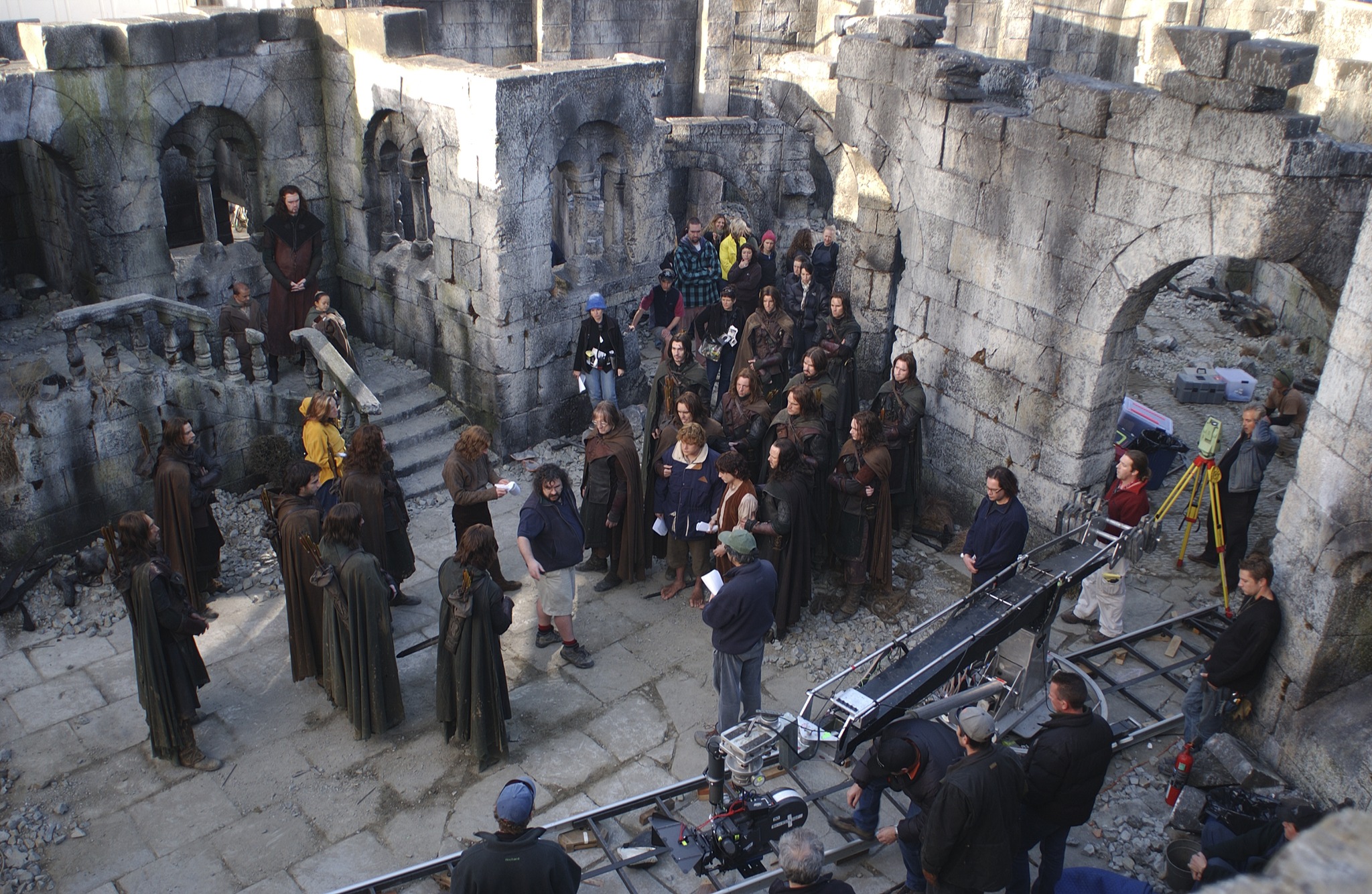The Lord of the Rings: The Two Towers (2002)

Peter Jackson’s “The Lord of the Rings: The Two Towers,” released in 2002, stands as a monumental achievement in cinematic storytelling, bringing J.R.R. Tolkien’s epic fantasy to life with unparalleled scope, depth, and visual grandeur. As the second installment in the acclaimed trilogy, the film continues the journey of Frodo Baggins and the Fellowship of the Ring, expanding upon themes of heroism, friendship, and the timeless struggle between good and evil.
Set in the fantastical world of Middle-earth, “The Two Towers” picks up where its predecessor left off, with Frodo (played by Elijah Wood) and his loyal companion Samwise Gamgee (played by Sean Astin) continuing their perilous quest to destroy the One Ring in the fires of Mount Doom. Meanwhile, Aragorn (played by Viggo Mortensen), Legolas (played by Orlando Bloom), and Gimli (played by John Rhys-Davies) join forces with the people of Rohan to defend against the dark forces of Saruman (played by Christopher Lee) and his relentless army of Uruk-hai.

Central to the film’s narrative is the character development of its protagonists. Frodo grapples with the burden of carrying the Ring, which grows heavier with each step closer to Mordor. His internal struggle against its corrupting influence serves as a poignant exploration of the temptation of power and the resilience of the human spirit. Samwise, in contrast, emerges as the unwavering voice of hope and loyalty, steadfastly supporting Frodo through moments of doubt and despair.
Aragorn, Legolas, and Gimli’s journey takes them to Rohan, a kingdom under threat from Saruman’s machinations. The bond forged between these warriors and the kingdom’s embattled leader, King Théoden (played by Bernard Hill), forms the emotional heart of the film. Together, they confront overwhelming odds and internal conflicts, embodying themes of courage, sacrifice, and the enduring power of fellowship.

Peter Jackson’s direction is marked by its meticulous attention to detail and immersive world-building. The film’s breathtaking landscapes, from the sweeping vistas of Rohan’s plains to the towering spires of Isengard, evoke a sense of awe and wonder, transporting viewers into Middle-earth’s rich tapestry of cultures and histories. Jackson’s use of practical effects, combined with groundbreaking CGI technology, seamlessly integrates fantastical creatures like Treebeard and the Ents into the narrative, imbuing the film with a sense of palpable realism and wonder.
Moreover, “The Two Towers” is distinguished by its epic battle sequences, notably the Battle of Helm’s Deep. Widely regarded as one of the most spectacular battles ever depicted on screen, the siege of Helm’s Deep showcases Jackson’s prowess in orchestrating large-scale action while maintaining emotional resonance and narrative coherence. The film’s masterful pacing and tension-building culminate in a climactic showdown that underscores the high stakes and dire consequences of war.

The performances in “The Two Towers” are uniformly stellar. Elijah Wood brings depth and vulnerability to Frodo, while Sean Astin imbues Samwise with unwavering loyalty and moral clarity. Viggo Mortensen’s portrayal of Aragorn exudes strength and nobility, while Bernard Hill’s nuanced performance as King Théoden captures the character’s journey from despair to redemption.
In addition to its technical achievements and narrative depth, “The Two Towers” is enriched by Howard Shore’s evocative musical score. Shore’s compositions, blending orchestral grandeur with ethereal vocals and thematic motifs, enhance the film’s emotional resonance and epic scope, underscoring moments of triumph, tragedy, and profound introspection.

In conclusion, “The Lord of the Rings: The Two Towers” stands as a towering achievement in cinematic history, expanding upon its predecessor’s narrative richness and setting the stage for the trilogy’s epic conclusion. Peter Jackson’s visionary direction, coupled with outstanding performances, breathtaking visuals, and a resonant musical score, has ensured that the film remains a timeless masterpiece beloved by audiences worldwide. Through its exploration of courage, friendship, and the enduring battle between light and darkness, “The Two Towers” continues to inspire and captivate viewers, reaffirming its place as a crowning achievement in the realm of fantasy cinema.










